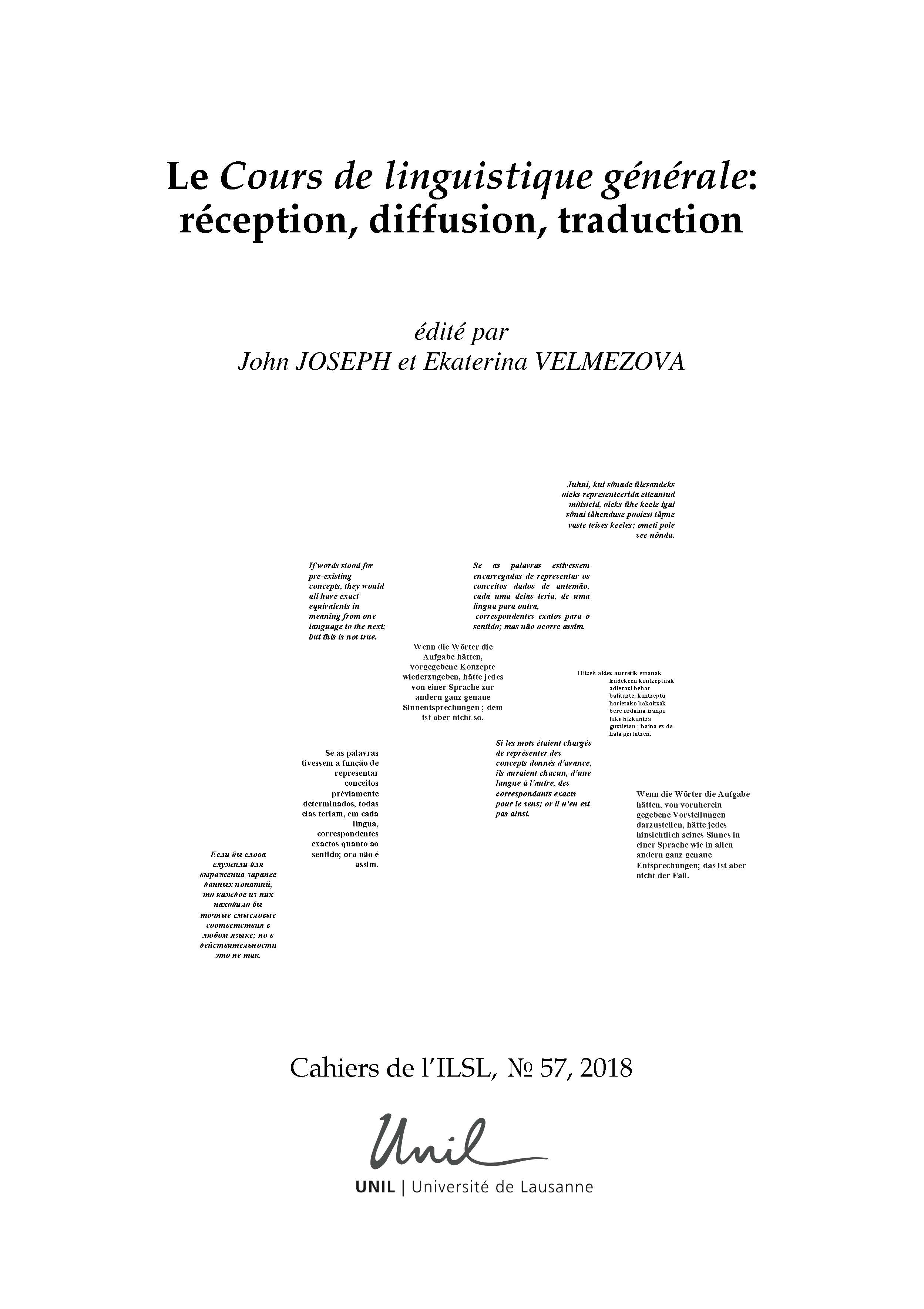Abstract
Ferdinand de Saussure’s Cours de linguistique générale (1916) has been widely
received as a dogmatic text, putting forward a reductivist conception of the language
system. Yet there are grounds for reading it very differently, as Roman Jakobson
(1969) did when writing of Saussure’s “dynamic repugnance toward the
‘vanity’ of any ‘definitive thought’”. Henri Meschonnic blamed “structuralists” (a
label which, of course, gets applied to Jakobson himself) for turning Saussure’s
linguistics of the continuous into a dogmatic “scientism of the discontinuous”.
Meschonnic’s list of structuralist distortions of Saussure is the framework for the
argument presented here in favour of a non-dogmatic reading of the Cours.

This work is licensed under a Creative Commons Attribution 4.0 International License.
